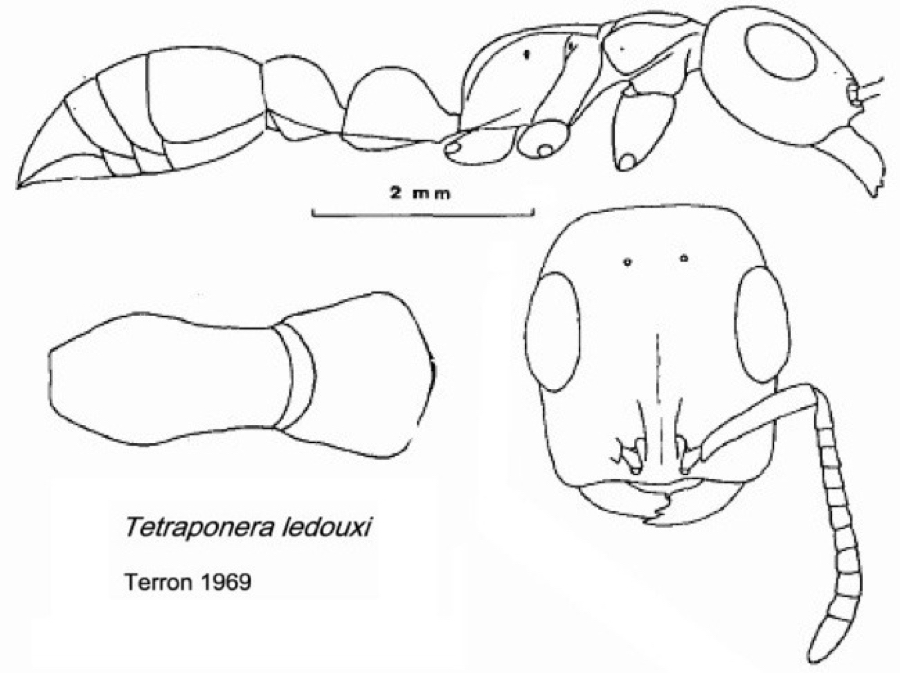Tetraponera ledouxi Terron
  Type location Cameroun
(Terron, 1969: 269, illustrated, all forms) - no images on Antweb
(December 2018) Type location Cameroun
(Terron, 1969: 269, illustrated, all forms) - no images on Antweb
(December 2018)
all forms described (see
Bolton, 1995)  . .
|
 Terron's (1969) description is at Terron's (1969) description is at  . .
In brief - Terron, who dedicated the species to
Professor Ledoux, reported it as coming from the Yaoundé Region
(without any specific details, indeed he appears not to have designated
a holotype), and described it as a temporary parasite of Tetraponera
anthracina Santschi, the most common Promyrmicine in the
region. He gave full descriptions of all the castes but I am
restricting this to the worker -
WORKER - TL 7.1-7.68-7.9 mm (21 individuals); SL 0.81
Colour black, with extremities brown; cuticle smooth and not finely
puncturate as in anthracina; whitish pubescence on all the
body; on the head and thorax less dense but longer than on anthracina.
Erect hairs, one at at the extremity of each frontal carina and 3-5
behind; one on the base, one on the middle and one at the end of the
scape; one on the first funiculus segment; on anterior border of
clypeus, incurved; small hairs on the internal surface of the mandible;
two on each side of the pronotum; two dorsal on the petiole; numerous
on the gaster. Head 1.05-1.20 times as long as wide; widest at the
level of the eyes, vertex and gulae a little more rounded than anthracina;
posterior angles rounded, occipital border straight or subconvex;
clypeus very short, rectilinear, slightly emarginate in the median area
(crenellated in anthracina). Mandibles shorter and more slender
than in anthracina. Eyes large, almost half the length of the
head, set in mostly in the posterior half of the head; two small
ocelli, set a little behind the level of the posterior of the eyes.
Antennae short, inserted very close to the clypeus; first and last
segments of funiculus longer than wider, no club.
Alitrunk similar in length and height to anthracina but
slightly narrower and higher. Propodeum bordered laterally by a carina
that is less pronounced than in anthracina, rounded towards the
posterior, declivity as in anthracina.
Petiole longer and higher than anthracina, postpetiole convex
dorsally and ventrally without carinae.
|